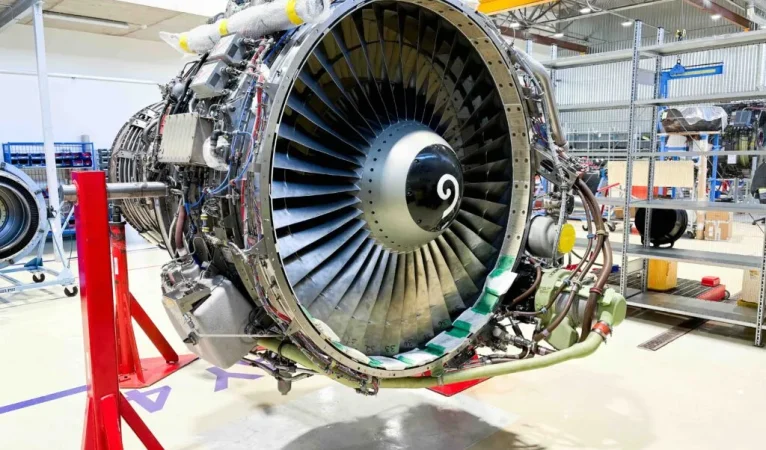What Types Of Inspections Are Included In Aviation Maintenance Services?

Aircraft safety depends on strict inspection schedules that ensure every system functions as intended. Before an airplane takes off, it undergoes rigorous checks to meet global aviation standards. These inspections are part of Aviation Maintenance Services, which protect passengers, crew, and airlines by identifying issues before they become risks. Companies like Magnetic Group specialize in delivering these inspections, ensuring aircraft remain safe, reliable, and compliant with regulations.
So, what types of inspections are included in aviation maintenance services? Let’s break them down.
The Importance of Aircraft Inspections
Air travel is one of the safest modes of transportation, largely because of continuous inspections and strict maintenance protocols. Aircraft operate under extreme conditions—high altitudes, varying temperatures, and constant pressure changes. Over time, these factors cause natural wear and tear.
Aviation Maintenance Services provide scheduled inspections that detect problems early, extend aircraft lifespan, and minimize downtime. Airlines and operators rely on specialized providers like Magnetic Group to perform these inspections with precision and professionalism.
Types of Inspections in Aviation Maintenance Services
Aircraft inspections fall into different categories, each serving a specific purpose. Together, they create a structured system that ensures every aircraft remains airworthy.
1. Pre-Flight and Transit Inspections
Before every flight, technicians perform quick but detailed checks to ensure the aircraft is ready for departure. These inspections include:
- Checking fluid levels such as oil and hydraulic fluid.
- Inspecting the exterior for visible damage or leaks.
- Verifying tire condition and landing gear performance.
- Testing lights, brakes, and control systems.
Transit inspections take place when an aircraft lands at an airport between flights. These checks guarantee that no issue developed during the previous journey. Magnetic Group’s skilled teams support airlines in minimizing delays by performing these inspections quickly and efficiently.
2. Daily and Service Checks
Airlines usually perform daily inspections to ensure that the aircraft remains in safe condition for continued use. Service checks may involve topping up fluids, checking emergency equipment, or verifying cabin systems.
These checks may appear routine, but they are critical for safety. They catch small issues that could grow into larger, more costly problems if ignored. Magnetic Group integrates these inspections into its Aviation Maintenance Services programs, helping operators maintain high safety standards with minimal downtime.
3. A-Checks
An A-check is one of the first levels of scheduled maintenance. It usually occurs every 400–600 flight hours or every 200–300 cycles, depending on the aircraft type.
During an A-check, technicians inspect and service:
- Hydraulic systems.
- Fluid levels.
- Safety equipment.
- Flight controls.
- Cabin systems.
These inspections take a few hours and are typically done overnight to avoid flight disruptions. With Magnetic Group’s expertise, A-checks are carried out efficiently so operators can return aircraft to service quickly.
4. B-Checks
Although less common today due to revised maintenance programs, some operators still schedule B-checks. These inspections occur approximately every six months. They involve more detailed checks than an A-check but less intensive work than a C-check.
Tasks include lubrication, engine checks, and operational tests. Magnetic Group’s technicians adapt their services based on each airline’s maintenance plan, ensuring all inspections align with the manufacturer’s and regulator’s requirements.
5. C-Checks
C-checks are more extensive and occur every 18–24 months or after a certain number of flight hours. These inspections require aircraft to be grounded for a longer period, sometimes up to two weeks.
A C-check includes:
- Thorough inspections of the fuselage and structural components.
- Testing electrical, hydraulic, and avionics systems.
- Performing corrosion checks.
- Overhauling interior elements such as seats, galleys, and lavatories.
Magnetic Group specializes in performing C-checks with precision. Their modern facilities and skilled workforce ensure aircraft receive comprehensive attention while minimizing downtime for operators.
6. D-Checks (Heavy Maintenance Visits)
The D-check is the most comprehensive and demanding inspection in aviation maintenance. It takes place every 6–10 years, depending on the aircraft model and usage. During this inspection, technicians essentially strip the aircraft down to its frame for a full evaluation.
Key tasks include:
- Structural inspections for fatigue and corrosion.
- Complete overhaul of systems and components.
- Cabin refurbishment or redesign.
- Replacement of major parts as required.
Because D-checks are costly and time-consuming, they are only performed by highly trusted providers. Magnetic Group has established itself as a reliable partner for heavy maintenance visits, combining efficiency with strict compliance to global safety standards.
7. Unscheduled and Special Inspections
Apart from scheduled checks, aircraft may require unscheduled inspections after unexpected events, such as:
- Bird strikes.
- Severe turbulence.
- Hard landings.
- Lightning strikes.
Special inspections are performed to confirm the aircraft’s safety before it returns to service. Magnetic Group offers rapid-response aviation maintenance services to address such situations, ensuring minimal disruption for airlines.
Why Choose Magnetic Group for Aviation Maintenance Services?
Performing inspections requires more than technical skill—it requires experience, advanced technology, and global expertise. Magnetic Group stands out because:
- They provide comprehensive inspection services, from pre-flight checks to heavy D-checks.
- Their teams consist of highly trained technicians who follow EASA and FAA standards.
- They use innovative diagnostic tools to identify and prevent issues early.
- Their customer-focused approach ensures services are tailored to each client’s needs.
By combining efficiency with precision, Magnetic Group helps operators maintain safe, reliable, and cost-effective fleets.
Conclusion
So, what types of inspections are included in aviation maintenance services? From pre-flight checks and daily inspections to complex A, C, and D-checks, every stage plays a critical role in keeping aircraft safe and reliable. These inspections not only protect passengers and crew but also extend aircraft lifespan and reduce long-term costs.
Among global providers, Magnetic Group continues to lead with its innovative, reliable, and customer-driven approach to aviation maintenance services. By ensuring that every inspection is performed with precision and care, they help airlines and operators keep the skies safe for all.

















